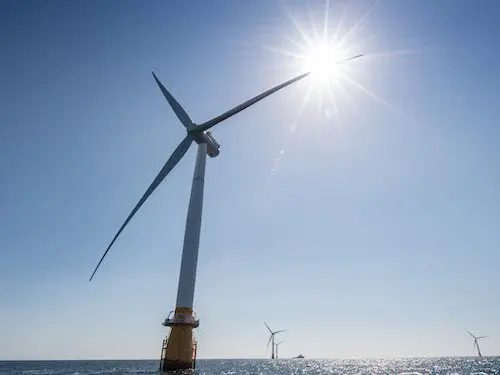
An initial assessment of Nova Scotia’s offshore wind potential says an operating wind farm off the province’s coast is still seven to 10 years out.
The finding was included in an interim report prepared [pdf] by the Committee for the Regional Assessment of Offshore Wind Development in Nova Scotia, established in March, 2023 to assess available research on the locations that would be suitable for offshore wind development, and the process for identifying those areas.
It is important to note that the report itself is “under construction,” David Neira, energy coordinator at the Halifax-based Ecology Action Centre, told The Energy Mix.“It’s a good report as a big picture of what is happening in the landscape of energy and offshore wind development in Nova Scotia,” he said, but “there are still gaps [in the report] that need to be completed to get more knowledge about offshore wind, and its relation and interaction with the coast.”
In addition to finding that Nova Scotia probably will not have an operating wind farm for years, the report recommends against installing any projects within 25 kilometres of the coast, while identifying six potential development sites: portions of Sydney Bight, Canso Bank, Middle Bank, Sable Island Bank, Emerald Bank, and the Eastern Shore.
It advises in favour of establishing a Nova Scotia offshore wind collaborative research initiative, against exempting proposed projects from the impact assessment process until the effects of offshore wind development are better understood, and in favour of developing a governance strategy and framework for compensation and coexistence with fisheries.
Neira said the report was based on a comprehensive engagement process and generated a lot of public interest. The committee said its findings “drew on research and expertise from advisory groups, government departments and agencies, fishing groups, Indigenous leadership and communities, non-governmental organizations, offshore wind developers, and other participants.”
Other groups have also responded favorably to the committee’s work. Kris Vascotto, spokesperson for the Nova Scotia Fisheries Alliance for Energy Engagement, told Saltwire that the interim report is remarkably well written and balanced.
“It’s very clear they listened to the concerns of the fishing industry and stakeholders,” he said, adding that his group’s recommendations included the six identified development areas.While the committee didn’t take up all of his group’s recommendations, Vascotto said, “they balanced a lot of considerations when they proposed those areas.”
“Overall, it forms an excellent foundation for future discussions and how we can try and achieve the next stage, which is trying to find responsible development on the landscape.”Nova Scotia’s Natural Resources Minister Tory Rushton also praised the report, but said the timeline for development was farther off than he had expected, writes CBC.
Despite the longer time frame, Neira said the delay in developing offshore wind power won’t derail Nova Scotia’s clean energy goals, since the province has also been pursuing energy resources like onshore wind and battery storage.“I think it’s better to take more time to do our research, to develop more knowledge and engage people and maybe get social acceptance of these new kinds of energy in the province,” Neira said.
Next steps for the committee include more information gathering and community engagement through the spring. Feedback from participants will be considered in the report’s next draft, which will be posted for a 60-day public comment period in September. After the committee reviews that round of feedback, it will produce a final report in January, 2025.
Source:https://www.theenergymix.com
